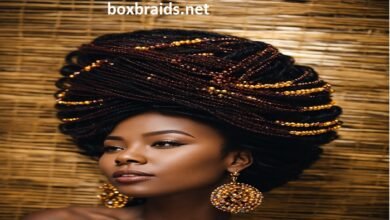Mastering the Art: A Comprehensive Guide on How to Braid

Learning how to braid is not just about styling hair; it’s an ancient art form that transcends cultures and generations. Whether you’re a beginner eager to learn how to braid or someone looking to refine your skills, this comprehensive guide is your go-to resource. We’ll delve into various techniques on how to braid, from the basic three-strand method to more intricate styles like the fishtail and Dutch braids. By the end of this article, you’ll have a thorough understanding of how to braid and the confidence to create stunning hairstyles for any occasion.
1. The History of Braiding: Understanding the Roots of How to Braid
Before we dive into how to braid, it’s essential to appreciate the rich history behind this practice. Braiding dates back thousands of years, with evidence of braided hairstyles found in ancient African cultures, Egypt, and Greece. Understanding the origins of how to braid adds depth to the practice and honors the cultural significance of this timeless art. Braids were often used to signify social status, age, and even marital status, making the knowledge of how to braid a valuable skill in many societies.
2. Essential Tools You Need for How to Braid
Embarking on the journey of learning how to braid requires some basic tools to make the process smoother and more efficient. Key items include:
- Wide-tooth comb: Essential for detangling hair before you begin how to braid.
- Hair elastics: Small, clear bands are ideal for securing braids.
- Hair clips: Useful for sectioning hair as you learn how to braid different parts.
- Styling products: Hair spray or mousse can help maintain the braid’s structure.
Having these tools at your disposal ensures you’re well-prepared to practice how to braid effectively.
3. Preparing Your Hair: The First Step in How to Braid
Preparation is a crucial step in mastering how to braid. Start by washing and conditioning your hair to ensure it’s clean and manageable. Towel-dry your hair and apply a leave-in conditioner if necessary. Detangle your hair thoroughly using a wide-tooth comb to prevent knots while you learn how to braid. If you have fine or slippery hair, adding a bit of texturizing spray can provide the grip needed when practicing how to braid.
4. Basic Three-Strand Braid: The Foundation of How to Braid
The basic three-strand braid is the foundation upon which all braiding techniques are built. Here’s how to braid a simple three-strand braid:
- Divide the hair into three equal sections.
- Cross the right section over the middle section. The right section becomes the new middle.
- Cross the left section over the new middle section.
- Repeat the process until you reach the end of the hair.
- Secure with an elastic band.
Mastering this basic technique is essential as it forms the basis for more complex styles in how to braid.
5. French Braid: Elevating Your Skills in How to Braid
The French braid is a classic style that adds a touch of elegance. To learn how to braid a French braid:
- Start at the crown by taking a section of hair and dividing it into three parts.
- Begin a basic braid by crossing the right and then the left sections over the middle.
- Add hair to each section before crossing over. This is the key step in learning how to braid a French braid.
- Continue down the head, adding hair each time until all hair is incorporated.
- Finish with a regular braid and secure with an elastic.
Practicing the French braid enhances your understanding of how to braid and prepares you for even more intricate styles.
6. Dutch Braid: Reversing the Basics in How to Braid
The Dutch braid, also known as the reverse braid, adds a three-dimensional effect. Here’s how to braid a Dutch braid:
- Start similarly to the French braid, but instead of crossing sections over, you cross them under.
- Divide a top section into three parts.
- Cross the right section under the middle, then the left under the middle.
- Add hair to each section before crossing under.
- Continue this pattern down the head.
- Secure the end with an elastic band.
By reversing the crossover direction, you create a braid that stands out, enriching your repertoire of how-to-braid techniques.
7. Fishtail Braid: Adding Intricacy to How to Braid
The fishtail braid offers a unique, intricate look. To learn how to braid a fishtail braid:
- Divide the hair into two equal sections.
- Take a small piece from the outer edge of the right section and cross it over to the left section.
- Repeat on the left side, crossing a small piece over to the right.
- Continue alternating sides, always taking from the outer edges.
- Secure the end with an elastic.
Though it may seem complex at first, with practice, you’ll find that how to braid a fishtail braid becomes a straightforward process.
8. Braiding for Different Hair Types: Customizing How to Braid
Understanding how hair type affects how to braid is essential:
- Straight Hair: May require texturizing products to hold the braid.
- Curly Hair: Detangle thoroughly and consider braiding while the hair is damp.
- Thick Hair: Sectioning is crucial to manage volume when learning how to braid thick hair.
- Fine Hair: Be gentle to avoid breakage and use products for added grip.
Adapting your technique based on hair type ensures success in mastering how to braid for anyone.
9. Common Mistakes to Avoid in How to Braid
When practicing how to braid, be mindful of these common mistakes:
- Uneven Sections: Ensure hair is divided equally to maintain brand consistency.
- Too Much Tension: Tight braids can cause discomfort; find a balance when learning how to braid.
- Neglecting Layers: Short layers may stick out; smooth them with styling products as you braid.
- Rushing the Process: Take your time to perfect each step in how to braid.
Being aware of these pitfalls helps you refine your skills in how to braid.
10. Styling and Accessorizing: Enhancing Your How-to Braid Skills
Once you’ve mastered the basics of how to braid, you can experiment with styles and accessories:
- Pancaking: Gently pull apart the braid to create volume.
- Incorporate Ribbons or Beads: Weave them into your braid for added flair.
- Combine Braid Types: Mix French and fishtail braids to create unique looks.
- Updos and Half-Up Styles: Use braids to enhance these classic hairstyles.
Conclusion
Learning how to braid is a rewarding journey that combines creativity, patience, and skill. From understanding the historical significance to mastering various techniques, you’ve now gained comprehensive knowledge of how to braid. Whether for everyday wear or special occasions, braids offer versatility and style. Keep practicing how to braid, and experimenting with new styles, and soon you’ll be able to create intricate braided hairstyles with ease and confidence.
FAQ
- What is the easiest way to learn how to braid for beginners?
For beginners, the easiest way to learn how to braid is by starting with the basic three-strand braid. Practice on someone else’s hair or use a mannequin head to get comfortable with the hand movements involved in how to braid.
- How long does it take to master how to braid complex styles?
The time it takes to master complex braids varies depending on practice and dedication. Regularly setting aside time to focus on how to braid different styles accelerates learning. Patience is key in mastering advanced techniques in how to braid.
- Can I learn how to braid my hair if I have short hair?
Yes, you can learn how to braid short hair, though it may require more precision. Opt for smaller braids and use styling products to manage shorter strands. Tutorials focused on short hair can provide specific guidance on how to braid effectively.
- What products help maintain the braid after learning how to braid?
Products like hair spray, mousse, or anti-frizz serum can help maintain your braid after you’ve learned how to braid. These products keep stray hairs in place and preserve the braid’s structure throughout the day.
- Is it necessary to use accessories when practicing how to braid?
While not necessary, accessories like hair clips, ribbons, or beads can enhance your braids once you’re comfortable with how to braid. They add a personal touch and can make even simple braids look more intricate and stylish.




